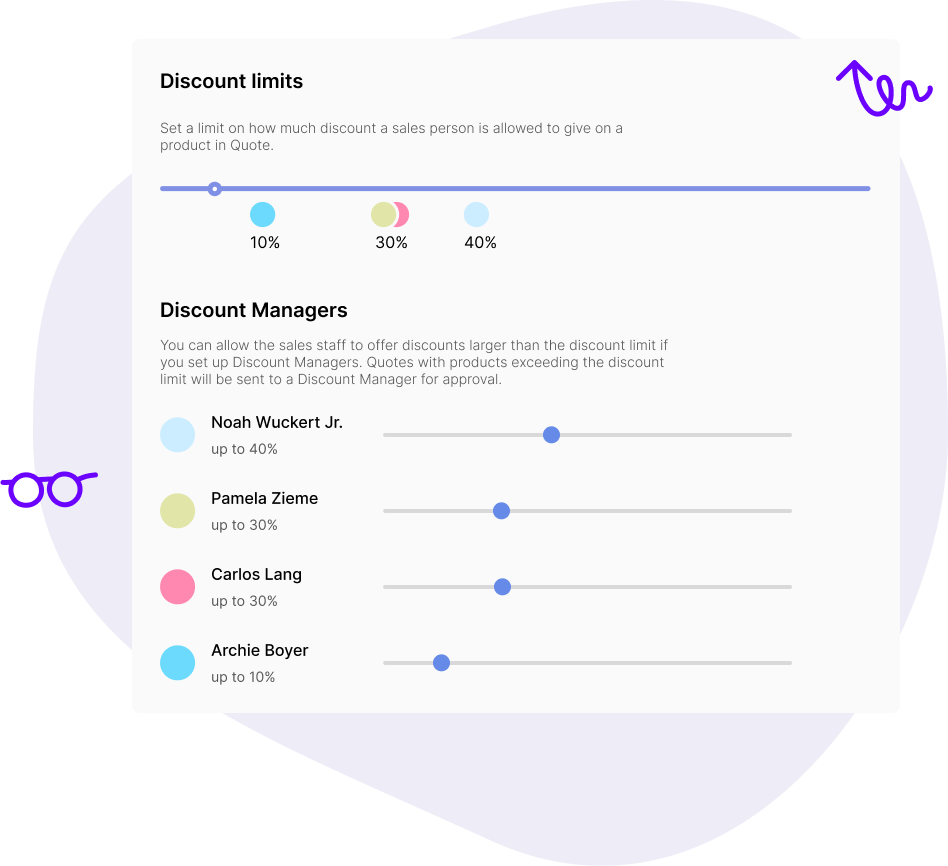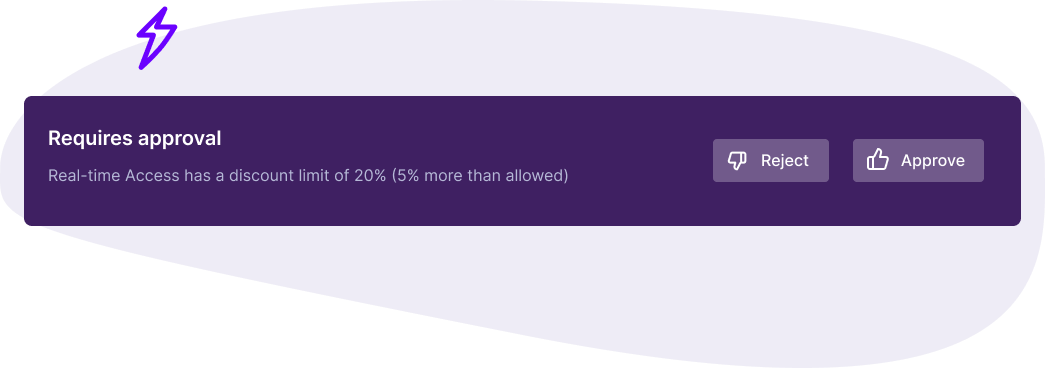
Quoting
Quoting for optimized packaging & pricing
Plock helps some of most impressive SaaS companies to achieve outstanding NRR

Build your discounting framework
Set discounting rules that apply automatically to quotes, ensuring your sales team can close deals on the right terms.

Quote approvals in a single click
People us and we love them

Since implementing Plock three years ago, we’ve been able to reduce manual billing tasks by over 80%. Not only has it streamlined our entire billing workflow, but it has also given us the power to monitor revenue in real time, providing unprecedented visibility and agility. This real-time insight allows us to make quick, informed decisions and better align our revenue strategy with our business goals.
Plock is Tailored for the Fast-Paced SaaS World

Optmize Pricing
Instant Action
Frequently asked questions
What is Usage Based Pricing?
Usage Based Pricing (UBP) in SaaS is a billing model where customers are charged based on their actual consumption of a product or service, rather than paying a fixed subscription fee. This approach, often called "pay-as-you-go" or "consumption-based" pricing, aligns the cost with the value the customer derives from the service.
Example: Imagine an API service for sending text messages. Instead of charging a flat monthly fee, customers are charged based on the number of text messages sent. For instance, each SMS sent in Germany might cost €0.075. So, if a company sends 1,000 messages in a month, their bill for SMS would be 1,000 × €0.075 = €75.00.
Why is Usage Based Pricing popular?
Here is why some of the fastest growing SaaS companies with high Net Revenue Retention (NRR) operate with Usage Based Pricing:
Customers Pay for What They Use: This keeps customers happy and loyal because they’re never overpaying. Happy customers? Higher retention!
Growth Without the Hard Sell: As customers grow, they naturally use more, and their spending increases too. No need for expensive upsells & sales commissions; their success drives your revenue growth.
In short, usage-based pricing is the go-to for boosting customer satisfaction, loyalty, and growth, making it a favourite among SaaS leaders!
What is a Hybrid Pricing Model?
A hybrid pricing model in SaaS is like getting the best of both worlds! 🎉 It combines elements of a fixed subscription fee (predictable income) with Usage Based Pricing (pay-as-you-go flexibility), creating a balanced approach that can appeal to a broader range of customers. And create the comfort your shareholders ask for 😀
Here’s how it works and why it’s clever:
Base Fee: Customers pay a flat subscription fee that gives them access to core features or a certain amount of usage. This base provides predictability for the business and ensures customers always have access to essential features.
Usage Tiers: Beyond the base, customers pay based on how much they use (like extra data, storage, or API calls). This way, they have room to grow without jumping to a new, high-cost plan. It’s budget-friendly for customers who want to start small, while giving them flexibility to pay for what they actually need as they scale up.
Smooth for everyone, no surprise this is the most common price model among Plock users!
What does it cost me to use Plock?
Plock charges a fee based on the volume of transactions or revenue that flows through our plattform within a set time period.
It's a small, agreed-upon percentage of the total billings processed through the platform each month. This way, costs stay proportional to the revenue or volume you are generating.